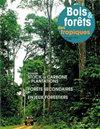评估不同泥炭地管理方案以减少火灾造成的温室气体排放。印度尼西亚Ogan Komering Ilir热带泥炭地案例研究。
IF 0.6
4区 农林科学
Q3 FORESTRY
引用次数: 0
摘要
热带泥炭地作为碳库发挥着重要作用,储存量约为35万TgC。在过去的几十年里,森林和农业种植园的土地利用和土地管理实践的变化,如火灾和排水的使用,导致了大量的碳损失。在印度尼西亚,这些火灾影响到整个地区的经济和公共卫生。在本文中,我们考虑了不同的缓解方案来减少泥炭地火灾,例如将地上生物量转化为生物能源或其他生物产品。首先,我们通过评估当前土地管理的排放源,估算了一个“一切照旧”(BAU)情景。然后,我们调查了潜在的缓解方案,包括生物量增值和泥炭地恢复,作为替代土地管理方案。最后,我们从气候变化和社会经济标准的角度评估了实施这些减缓情景的影响。本研究基于印度尼西亚Ogan Komering Ilir (OKI)地区的一个案例研究。BAU情景下的温室气体排放分析表明,退化泥炭地、油棕林和纸浆木林受火灾影响的区域分别释放70.60±30、139.40±31和159±27 Mg CO2-eq ha-1年-1。未受火灾影响的地区分别释放18.45±12、85.08±21和108.3±15 Mg co2当量ha-1年-1。对于恢复情景,我们发现三种土地利用的温室气体排放量相似,为-0.9 Mg co2当量ha-1年-1。在此评估之后,我们根据社会经济标准评估了OKI生物量增值方案的可行性。在建立这样一个生物质市场是可行的地区,我们预测与BAU相比,温室气体排放量将减少4%到6%。推动这些地区的生物质市场可以在没有政府投资的情况下减少火灾发生。相反,在没有经济上可行的生物质市场的情况下,工业将无法使生物质增值。对于这些地区,我们建议将重点放在激励支付或泥炭地恢复战略上。最后,我们提出生物质增值作为当前实践的一个有希望的替代方案,可能减少火灾的负面影响,同时为人口创造新的收入。本文章由计算机程序翻译,如有差异,请以英文原文为准。
Evaluation of different peatland management scenarios to reduce GHG emissions from fires. A case study in tropical peatlands in Ogan Komering Ilir, Indonesia.
Tropical peatlands play an important role as carbon pools, storing approximately 350,000 TgC. Over the last decades, changes in land use and land management practices for forestry and agricultural plantations, such as the use of fires and drainage, have led to a significant amount of carbon loss.
In Indonesia, these fires affect both the economy and the public health of the entire region. In this thesis, we considered different mitigation scenarios to reduce peatland fires, such as converting aboveground biomass into bioenergy or other bio-products. First, we estimated a business as usual (BAU) scenario by evaluating sources of emission of the current land management. We then investigated potential mitigation scenarios, including biomass valorization and peatland restoration, as alternative land management options. Finally, we evaluated the impact in terms of climate change and socio-economic criteria of the implementation of these mitigation scenarios. This study was based on a case study in the Ogan Komering Ilir (OKI) district of Indonesia. The analysis of GHG emissions in the BAU scenario shows that areas affected by fire release 70.60±30, 139.40±31 and 159±27 Mg CO2-eq ha-1 yr-1 for degraded peatland, oil palm plantations and pulpwood plantations, respectively. Areas not affected by fires release 18.45±12, 85.08±21 and 108.3±15 Mg CO2-eq ha-1 yr-1, respectively. For the restoration scenario, we found similar GHG emissions of -0.9 Mg CO2-eq ha-1 yr-1 for the three land uses. Following this assessment, we evaluated the feasibility of the biomass valorization scenarios in OKI based on socio-economic criteria. In the areas where creating such a biomass market is feasible, we predicted a reduction of between 4 % and 6 % of GHG emissions compared with BAU. Boosting the biomass market in these areas could make it possible to reduce fire occurrences without government investment. On the contrary, industry will not be able to valorize the biomass in the case where no economically viable biomass market is feasible. For these areas, we instead suggest focusing efforts on incentive payments or peatland restoration strategies. We concluded by presenting biomass valorization as a promising alternative to current practices, potentially reducing the negative impact of fires while generating a new income for the population.
求助全文
通过发布文献求助,成功后即可免费获取论文全文。
去求助
来源期刊

Bois et Forets Des Tropiques
FORESTRY-
CiteScore
1.50
自引率
16.70%
发文量
31
审稿时长
>12 weeks
期刊介绍:
In 1947, the former Tropical Forest Technical Centre (CTFT), now part of CIRAD, created the journal Bois et Forêts des Tropiques. Since then, it has disseminated knowledge and research results on forests in intertropical and Mediterranean regions to more than sixty countries. The articles, peer evaluated and reviewed, are short, synthetic and accessible to researchers, engineers, technicians, students and decision-makers. They present original, innovative research results, inventions or discoveries. The journal publishes in an international dimension. The topics covered are of general interest and are aimed at an informed international audience.
 求助内容:
求助内容: 应助结果提醒方式:
应助结果提醒方式:


